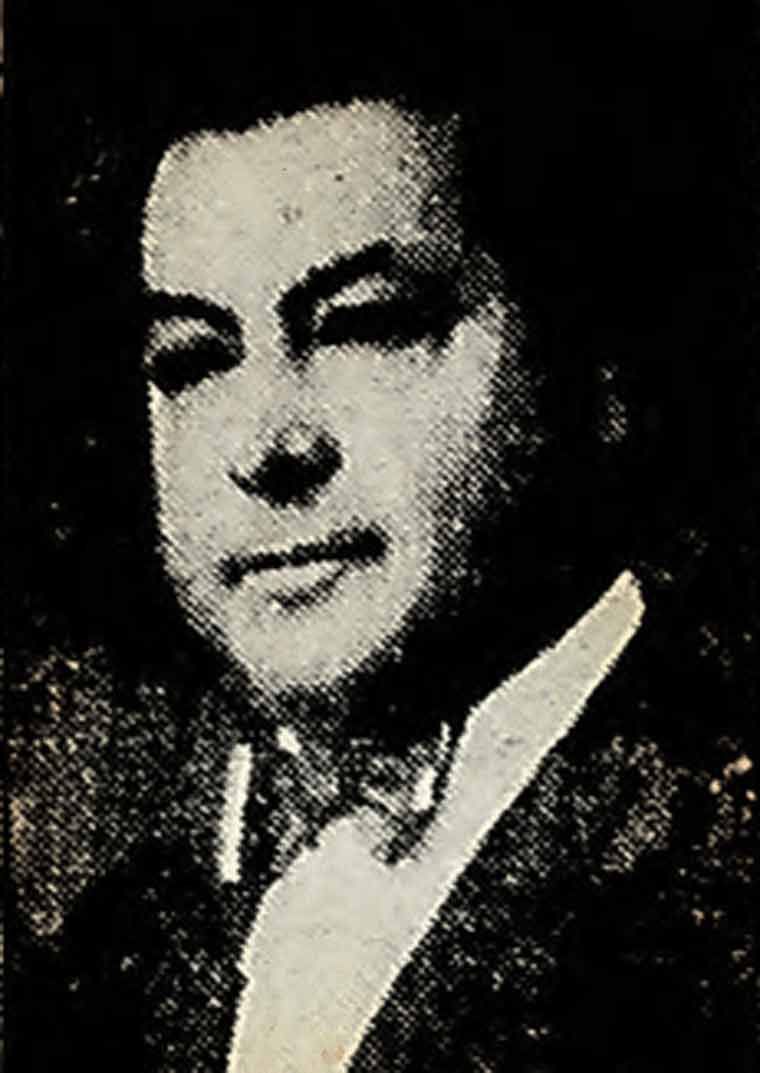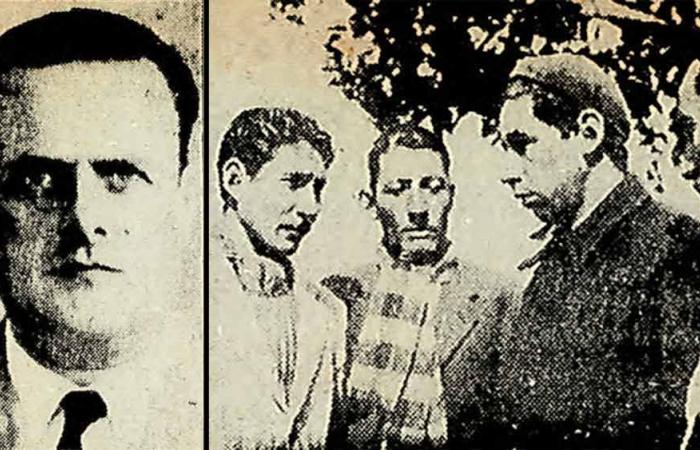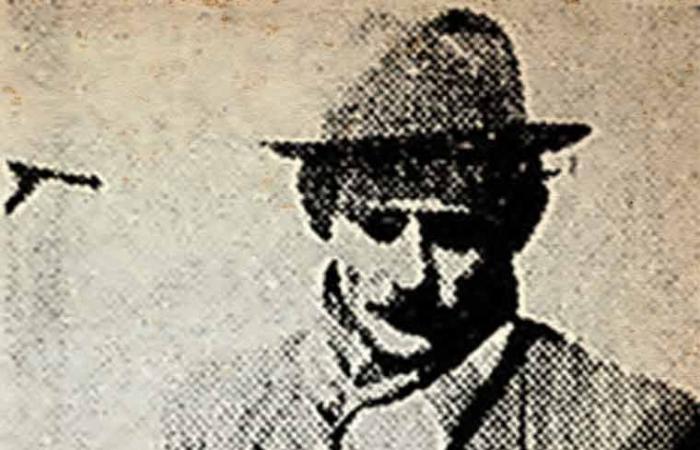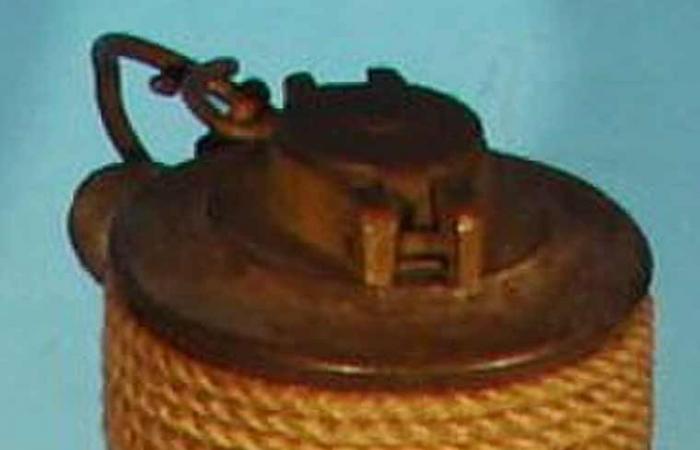On Monday afternoon July 21, 1947 An explosion silenced the birds and stopped for a moment the hearts of the few residents who lived in the rural area of ’72. After the blink of an eye, a tall mushroom of black smoke and objects raining down within a 400 meter radius were seen.
The devastating explosion that occurred at 3:30 p.m. in the Bossone Brothers factory He killed one of its owners, three workers, a neighbor and four minors. The bodies were found by the La Plata Volunteer Firefighters with the invaluable help of Tricky, the dog of the factory complex.
The establishment dedicated to the manufacture of fireworks and military supplies It worked in a 12 x 4 meter shed. At the time of the event, 10 people were working – mostly women and children – who were producing large quantities of flaming cartridges (that give off flames) used by the Argentine Army for target practice. According to the first indications, the incident occurred due to the accidental detonation of a grenade that blew up the gunpowder tank.
The plant had begun operating around 1940 in the fields of Matilde Modesta Bercetche in the area known as “The Eleanor”. “It was located on the dirt road towards Gobernador Udaondo, going down at Km. 72 of Route 3, on the curve before reaching the La Fortuna de Farisán warehouse, on the left hand. That establishment stood there, so unusual in a rural environment,” says María Lydia Torti in her book Ancient Cañuelense Chronicles.
Thanks to the newspapers of the time, InfoCañuelas was able to reconstruct today unknown details of that tragedy that reached all the newsrooms in the world.
The news appeared in The Evening Star (Washington) and The Citizen (Kent).
The newspaper Criticism, In its July 22 edition, it published the details of the investigation carried out by the Cañuelas police. He Commissioner Abel Laval He reported that the dead were nine:
• José María Bossone, 35 years old, married. He was one of the owners and manufacturer.
• The workers Pedro Carlos Delfino, 22 years old; and Roque Martino19, both single.
• Manuel Feliciano Espíndola, 54 years old, married, who had gone to work ten days before the accident. His wife died with him, Leonor González, and his two young children.
• Teresa Alegre and his little son Inocencio Escudero, 8 months old, who lived in a house located within the complex.
TRICKI AND INOCENT
The newspaper Crítica interviewed Arnaldo Escudero, Inocencio’s father. The man related that that Monday the 21st at mid-afternoon he was drinking mate with his wife and his little son until he went to gather firewood on a mountain located about 300 meters from the factory. Suddenly he felt the explosion, saw smoke and debris flying through the air. He ran towards the powder magazine and when he approached the property He came across a human head lying in the grass.
“Arnaldo does not dare to face the sight of his loved ones destroyed. He runs towards the town, towards his family home. Shortly after, in the modest house, full of brothers, brothers-in-law and sisters-in-law, everyone weeps in chorus around him. The explosion has been a grim incident,” described the Buenos Aires morning newspaper.
“Only a remnant remains of the masonry factory, a memory. From the sheds: pieces of sheet metal, wood, shapeless iron, a pile of bricks that barely rise from the ground. The corpse of a man and that of a woman face down on the bricks. The causes of the misfortune will never be known. Everything has blown up when the volcano burst. “Everything has been treated equally by the enormous force of the explosion.”
González, the night watchman, and his dog Tricki. Diario Crítica, July 22, 1947.
In addition to the pawn Escudero, The night watchman, surnamed González, was miraculously saved. who was in a neighboring country house next to his dog Tricki. The factory mascot was instrumental in finding the mutilated corpses scattered under the remains of masonry.
On July 23 at 6 in the morning, two days after the detonation, the La Plata firefighters resumed the search. Little Inocencio still needed to be found.
“About 3 meters from the epicenter of the explosion, under a mountain of rubble, Tricki began to howl and move restlessly. Officer Alfanotti noticed the animal’s desperation and began to move aside wood, bricks and twisted sheets until it saw the remains of the unfortunate creature, which were handed over to the troubled father”Crítica detailed through its special envoy.
The wake took place in the assembly hall of the Municipality of Cañuelas. The municipal commissioner Jose Suarez and officials sent by the Government led the procession that headed towards the cemetery on Route 205 accompanied by a caravan of town residents.
The four members of the Espíndola family were transferred to the city of Lobos, where they were from, while Roque Martino and Juan C. Delfino were buried in Lomas de zamora.

The Bossone grenade. It is believed that an accidental activation of that device triggered the explosion of the plant.
BOMBS AND MORTARS
The company Bossone Hnos. was constituted by José María and José Antonio Bossone, who before settling in Cañuelas to manufacture military supplies had a turning and rectification workshop on Cangallo Street at 2700 Capital Federal. There they also manufactured special parts for aviation and industrial machines.
They inherited their father’s trade, Armando Raimundo Bossone, an Italian industrialist born in Piea D’Asti. At the end of 1937, when he was 55 years old, he emigrated to Argentina.
Shortly after his arrival in the country founded the metallurgical company “AR Bossone SRL” specialized in the manufacture of aviation bombs and grenades mortar for the armed forces.
In 1940 the Ministry of War approved the use of the “Bossone model hand grenade”designed by the Italian industrialist, and in 1944 the Ministry of Industry and Commerce of the Nation granted him the patent for his invention called “New Land War Mine” with a license to manufacture it for 15 years (file 327.246/44).

Espíndola, the Lobos worker who died with his family. His mother won a labor lawsuit against the company.
TRIAL AND SENTENCE
Shortly after the events at the Cañuelas powder magazine Benita Del Carmen Farías, mother of the deceased Manuel Espíndola, sued the firm Bossone Hnos.
In the trial carried out in the Labor Courts of La Plata, it was stated that Espíndola was grandson-in-law and sole supporter of the elderly Ángela Díaz de González, 92 years old, originally from Lobos, who was left to the charity of the neighbors who proceeded to temporarily provide her with shelter and food. “To the pain of the disappearance of all of her relatives, that poor old woman must add the bitterness of her very difficult situation, since she does not have any means of survival.”
Although the firm Bossone Hnos. tried to disassociate itself from its responsibility in the events alleging that Espíndola was an employee of a contractorthe analysis of the company’s accounting showed the opposite.
In 1949 the Labor Court He sentenced her to pay 6 thousand pesos in national currency as compensation plus 100 pesos as mourning expenses, all with interest, sum deposited in the Accident Fund.
Towards the end of the remaining decade of the company Bossone was absorbed by the factory Argentine Metallurgical and Plastic Industry (IMPA) which had been founded by Eng. José Mario Sueiro and nationalized in 1945 by the government of Edelmiro Farrell.
Sources:
• Criticism Journal, editions of July 22 and 23, 1947.
• The Order Diary (Santa Fe), edition of July 22, 1947.
• Ancient Cañuelense ChroniclesMaría Lydia Torti, 2002.
• Session Diary. Chamber of Deputies of the Province of Buenos Aires. 1947.
• Official bulletin of the Argentine Republic.
• Labor Justice RulingsVolume 7, 1949.
Written by: Germán Hergenrether





